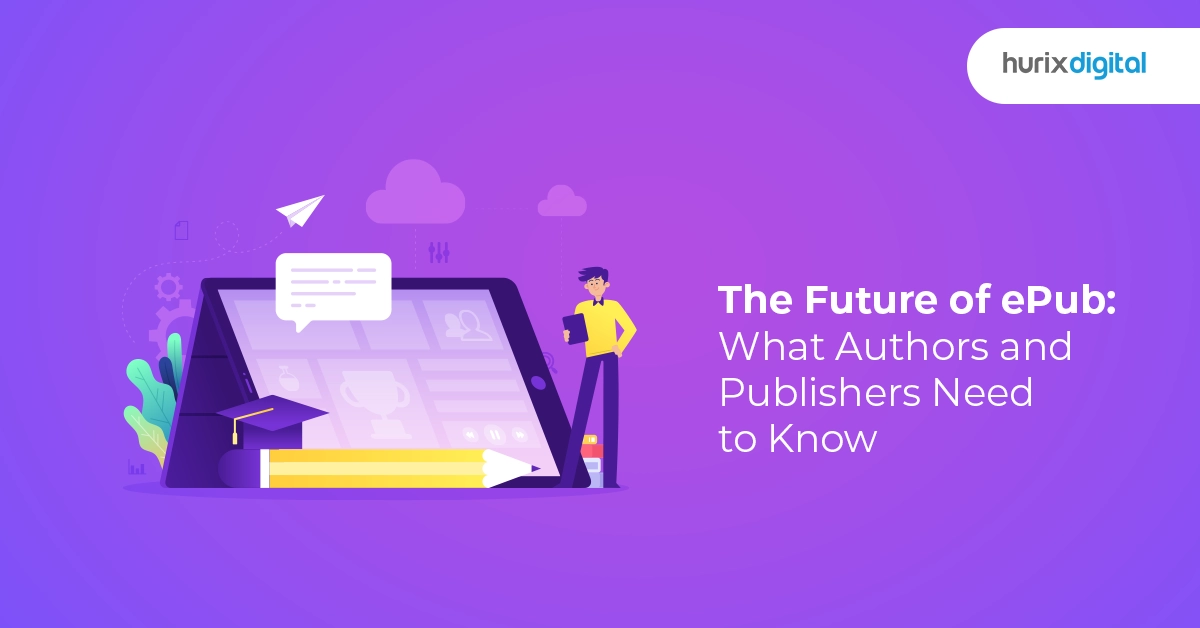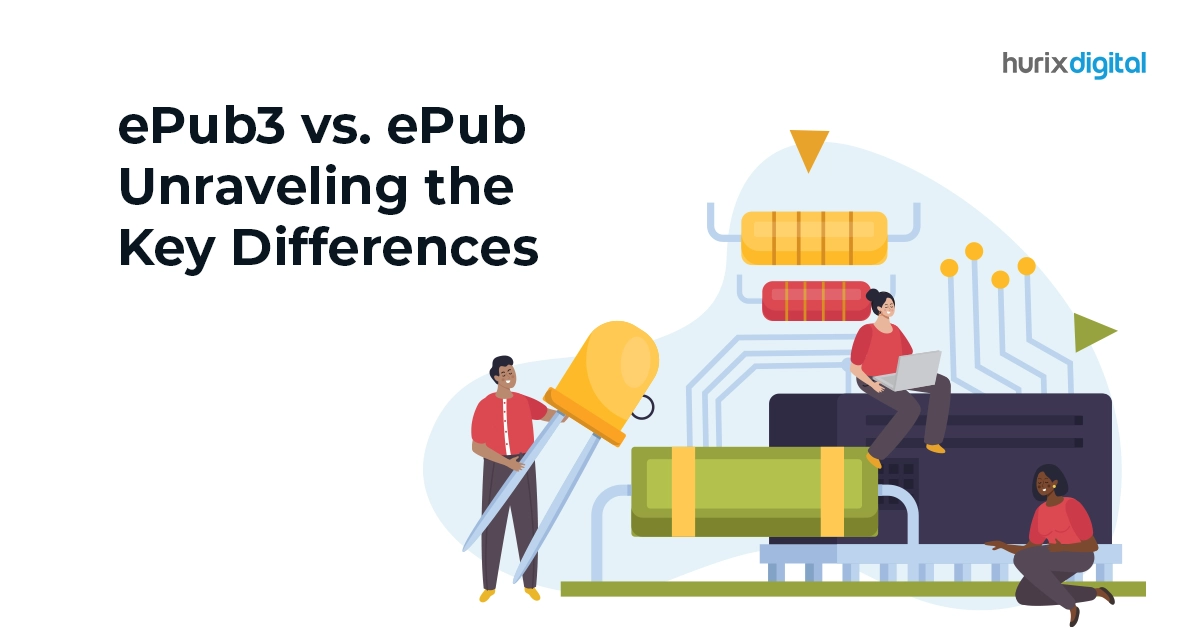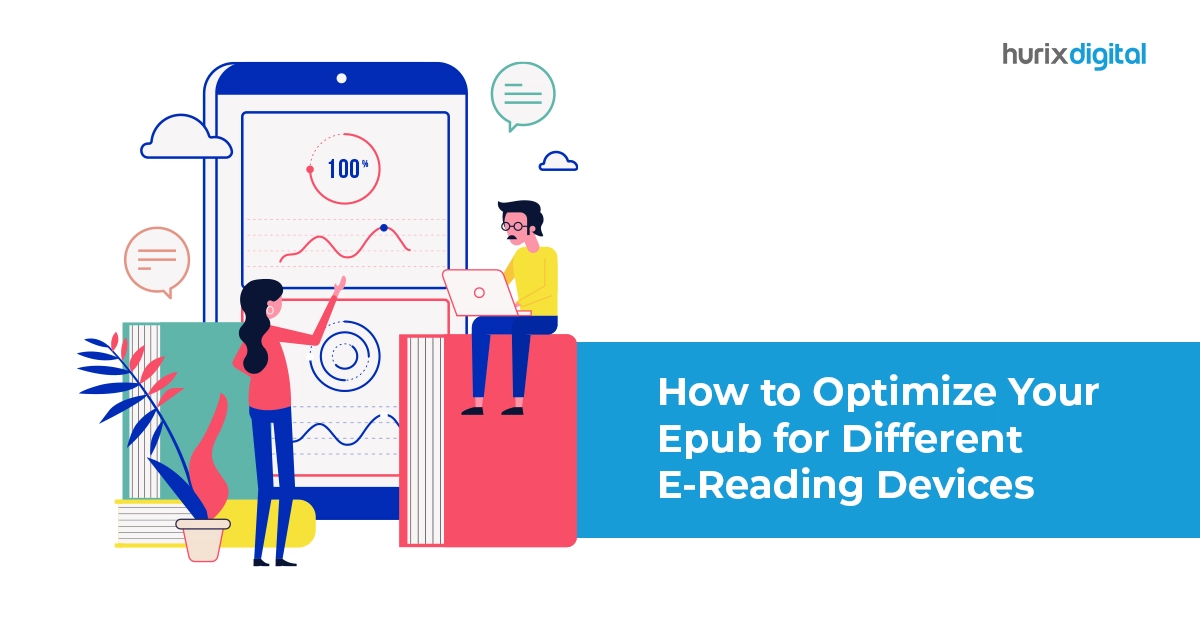Summary
Discover the future of ePub and essential insights for authors and publishers in the digital age. From understanding ePub evolution and format updates to embracing accessibility guidelines and conversion best practices, stay ahead of the curve with Hurix Digital's expertise in digital publishing solutions.
In the ever-evolving landscape of digital publishing, the ePub format stands as a cornerstone, offering authors and publishers a versatile platform to distribute their works across various devices. As technology advances and reader preferences shift, understanding the trajectory of ePub evolution becomes paramount. In this article, we delve into the future of ePub, shedding light on crucial insights that authors and publishers need to know.
Table of Contents:
- The Evolution of ePub Standards
- Insights from the Publishing Industry
- ePub Format Updates: What You Need to Know
- Exploring ePub3 Features
- ePub vs Other Formats: A Comparative Analysis
- eBook Accessibility Guidelines
- eBook Conversion Best Practices
- Conclusion
The Evolution of ePub Standards
ePub, short for electronic publication, has undergone significant transformations since its inception. Initially introduced as ePub 2.0, the format has evolved to ePub 3.0, offering enhanced features and functionalities. Today, the ePub3 standard continues to shape the digital publishing landscape, providing support for rich media, interactivity, and accessibility features. As the digital reading experience evolves, staying abreast of ePub standards is essential for authors and publishers alike.
Also Read: Why Do Authors Need a Professional ePub Conversion Service?
Insights from the Publishing Industry
In the competitive realm of publishing, staying ahead of the curve is imperative. Understanding the latest trends and developments in eBook publishing can give authors and publishers a competitive edge. Whether it’s embracing innovative storytelling formats or optimizing content for digital consumption, insights from the publishing industry can inform strategic decisions and drive success in the digital marketplace.
Press Release: Hurix launches breakthrough technology for 100% automated PDF to ePub3 Fixed Layout Conversion at FBF 2013
ePub Format Updates: What You Need to Know
Keeping up with ePub format updates ensures compatibility and accessibility for readers across diverse devices and platforms. From addressing compatibility issues to incorporating new features and functionalities, staying informed about ePub format updates is crucial for delivering high-quality digital reading experiences. By embracing the latest advancements, authors and publishers can maximize the reach and impact of their content.
Exploring ePub3 Features
ePub3 represents a significant leap forward in digital publishing, offering a wealth of features to enhance the reading experience. From support for audio and video content to interactive elements and responsive design, ePub3 empowers authors and publishers to create immersive and engaging eBooks. Understanding the capabilities of ePub3 features enables content creators to leverage its full potential and captivate readers in new and innovative ways.
The ePub3 Factor Uplifting Digital Books Dynamism
A significant inflection point in the ePub journey came with the release of ePub3 specifications in late 2011 standardizing structural and presentation enrichments setting modern design precedents.
ePub3 introductions like HTML5 support, scripting capabilities, and expanded multimedia truly uplifted eBook versatility like never before. Authors gained new descriptive powers while publishers obtained multifaceted monetization models manifesting through:
🔷 Immersive Interactivities – Choose-your-adventure storylines, quiz callouts, 3D flip animations – with equal ease to now captivate readers thirsting richer engagement.
🔷 Multimedia Incorporations – Embed eye-catching audio samples or videos seamlessly without worrying about device compatibility barriers that previously hampered ambitions.
🔷 Fluid Resizing – Craft liquid layouts adjusting felicitously across smartphones or 10-inch tablets retaining reflow and visualization integrity.
This interactivity stimulus equally influenced accessibility with Global Text to Speech constituting a milestone for the print disabled demographic often sidelined earlier from eBook adoption benefits.
ePub vs Other Formats: A Comparative Analysis
In a landscape populated by various eBook formats, understanding the strengths and limitations of ePub compared to other formats is essential. While PDFs offer fixed layouts suitable for print replicas, MOBI formats cater primarily to Kindle devices. ePub, on the other hand, offers a dynamic and adaptable reading experience across a wide range of devices and platforms. By weighing the pros and cons of different formats, authors and publishers can make informed decisions about the most suitable format for their content.
eBook Accessibility Guidelines
Accessibility is a fundamental aspect of digital publishing, ensuring that content is available to all readers, regardless of their abilities. ePub format, particularly ePub3, provides robust accessibility features such as semantic markup, text-to-speech support, and navigation aids. Adhering to eBook accessibility guidelines not only enhances the inclusivity of content but also aligns with regulatory requirements and ethical considerations.
Why ePub Retains Growth Edge amidst Choices Galore
Skeptics often ponder whether, despite versatility infusion, ePub has plateaued amidst digital format variety with models like audio and email novel serialization challenging the status quo.
However, ePub retains inherent advantages cementing reader appeal making adaptation central for publishing continued prosperity through the coming decade:
✔ Visual Engagement Flexibility – Images, data visualizations, animations – ePubs optimize ultrarich visual language shaping comprehension and recollection in ways audio can’t quite match.
✔ Responsiveness and Portability – Read anywhere mobility remains ePub’s forte over print or PDFs while smartphone ubiquity expands conduits to engage distracted minds.
✔ Feature Renaissance Power – Modern ePub3 tooling introduces experience dimensions earlier lacking while retaining a lightweight delivery advantage over clunky apps.
✔ Accessibility Leadership – Structural metadata for text reflow, and scaling font controls constitutes innate eBook inclusivity benefitting print-disabled demographics neglected elsewhere.
This unique blend cements why ePub constitutes the growth horse to bet on in the digital distribution race for book businesses determined to secure reader mindshare amidst fragmenting attention spans.
eBook Conversion Best Practices
Converting content into the ePub format requires careful attention to detail to preserve formatting, layout, and functionality. eBook conversion best practices encompass a range of considerations, including optimizing images, handling fonts, and ensuring compatibility with various reading systems. By following established guidelines and leveraging professional conversion services, authors and publishers can streamline the conversion process and deliver high-quality eBooks to readers.
Conclusion
As the digital publishing landscape continues to evolve, partnering with a trusted service provider like Hurix Digital can streamline the eBook production process and ensure success in the digital marketplace. With expertise in content conversion, accessibility solutions, and digital publishing technologies, Hurix Digital empowers authors and publishers to navigate the complexities of the digital landscape effectively. Contact us today to learn more about how we can help you unlock the full potential of your digital content.









